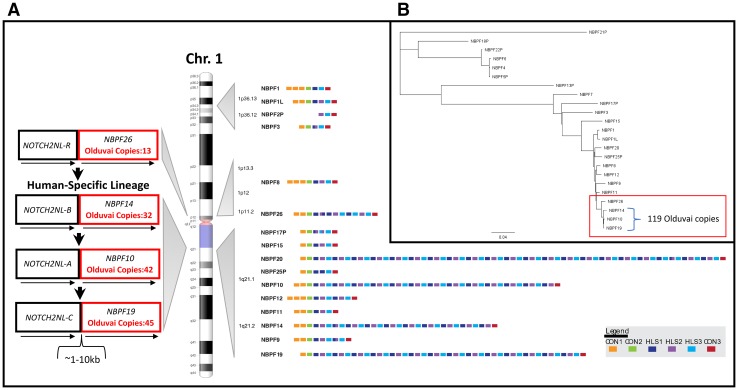Fig. 1.
Genome organization, phylogeny, and recent evolution of human NBPF genes and Olduvai protein domains. a Shown to the right of chromosome 1 are the genome positions of NBPF genes and the number and arrangement of Olduvai domain subtypes based on the most recent human genome assembly (hg38) (Sikela and Quick 2018). Each block represents an Olduvai protein domain; each of the six primary Olduvai subtypes are depicted by a different color as denoted in the key. Shown to the left of chromosome 1 is the recent evolutionary history of NOTCH2NL/NBPF gene pairs and Olduvai protein domains. Model describes the order and timing of likely duplication events that produced multiple human-specific copies of NOTCH2NL and NBPF genes and human-specific hyper-amplification of Olduvai domains. Arrows below each gene indicate direction of orientation. b Phylogenetic profile of 23 human NBPF genes. Phylogenetic analysis was carried out on human NBPF genes. To avoid confusion resulting from the inclusion of highly similar Olduvai protein domains found in each NBPF gene, sequences were analyzed that only covered the start codon of each gene along with approximately 1 kb of flanking sequence. Phylogenetic profiling was performed using the Genious DNA analysis package and its multiple alignment program. Predicted number of Olduvai domains encoded by three human-specific NBPF genes (NBPF10, NBPF14, and NBPF19) is shown. The red box denotes the part of the NBPF phylogenetic profile which indicates that NBPF26 is older than, and more evolutionarily distant from NBPF10, NBPF14, and NBPF19

